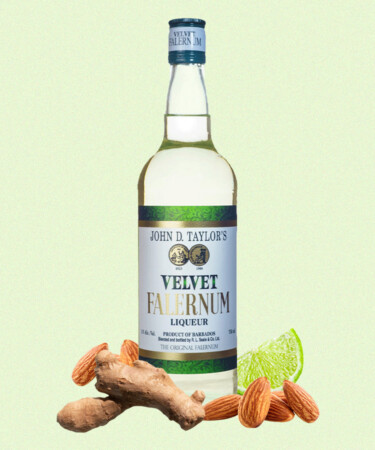While rum cocktails may most often be affiliated with summer days and Caribbean climes, the spirit can be enjoyed in cocktails all year round. If you’re exploring the options for your next tropical cocktail, you may notice an ingredient listed that you haven’t heard of before: falernum.
Invented some time in the late 1700s, falernum was mentioned in writings of Charles Dickens Jr. as early as 1892 and was included by Mrs. H. Graham Yearwood in “West Indian and Other Recipes,” published in 1911. The liqueur, which typically carries an ABV of around 11 percent, is often called the triple sec of rum. To learn more about the spirit, which is a key component in many classic rum cocktails like the Zombie, VinePair spoke with Shannon Mustipher, bartender and author of “Tiki: Modern Tropical Cocktails,” to learn more.
“It is helpful to think of it as a ‘tropical triple sec,’” Mustipher says of falernum. “But it’s important to note that as its origins are in Barbados, the most traditional versions will be based on Bajan rum, as opposed to a neutral spirit typically used to make triple sec.”
Infused with lime skin, almonds, and spices like cinnamon, cloves, and nutmeg, falernum carries a citrus-forward flavor with mild floral and herbal notes. You may also see Falernum referred to in cocktail recipes as Velvet Falernum, which is the brand of falernum most widely available at liquor stores. John D. Taylor’s Velvet Falernum combines flavors of ginger, clove, almond, vanilla, and lime and is widely regarded as the original falernum.
In addition to popular concoctions like the Zombie, falernum is featured in many classic tiki cocktails including Three Dots & a Dash and various swizzles. “Falernum is also traditionally used in the Corn ‘n’ Oil, a Barbadian take on the Rum Old Fashioned,” Mustipher explains. “It is also featured in the Royal Bermuda Yacht Club, a Daiquiri variation by Trader Vic circa 1934.”
While falernum most commonly mixes into rum drinks, don’t be afraid to experiment. “Agave [spirits] pair exceptionally well with falernum,” Mustipher explains. “It also plays well with pisco and lighter-bodied brandies.” If you’re looking to make a mocktail featuring tropical flavors but don’t want to lose out on falernum’s spice notes, the ingredient can be easily made at home in the form of a non-alcoholic syrup.
